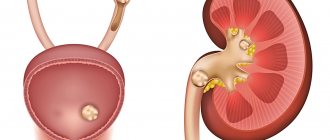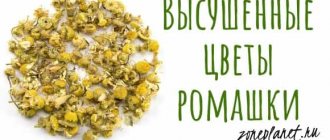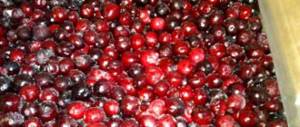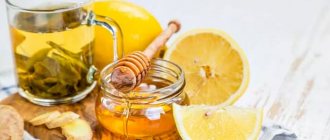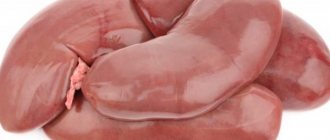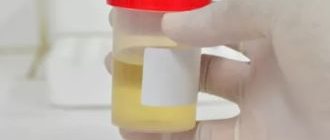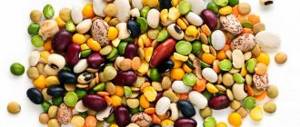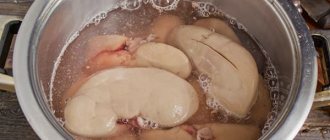The use of honey improves the condition of a patient suffering from urolithiasis. It has a beneficial effect on human internal organs, including the kidneys.
Healing product
Even medical professionals confirm the healing properties of honey and recommend taking honey products for preventive or therapeutic purposes.
Why is honey good for the kidneys?
The main advantage of honey is its composition. It contains a negligible amount of proteins and salts that are contraindicated for kidney diseases, but it contains a high content of beneficial vitamins, minerals and trace elements that have a beneficial effect on the genitourinary system.
| Vitamin C | Normalizes metabolic processes, strengthens the immune system, neutralizes toxins and poisons |
| Vitamin E | Has an anti-inflammatory effect, restores cell structure |
| Vitamin A | Promotes the development and growth of the body |
| Vitamin B3 | Relieves tension, eliminates the risk of pathologies of the kidneys, heart and liver |
| Vitamin B5 | Ensures liver function and supplies the brain with oxygen |
| Retinol | Responsible for the functioning of the mucous membranes of the respiratory and urinary tracts |
| Riboflavin | Participates in restoration processes, produces a general strengthening effect |
| Tocopherol | Has a beneficial effect on the body in case of liver and kidney pathologies |
| Carotene | Restores cells of the genitourinary system |
When the kidneys fail, the process of urination is disrupted. Accumulated toxins are not removed from the body, and the person’s condition worsens.
Honey normalizes diuresis, having an anti-inflammatory, soothing, antibacterial and relaxing effect on the organs; normalizes the pressure in the blood and tissues that is disturbed due to kidney diseases.
Additional Information! Diuresis is the main indicator of kidney health. This concept refers to the amount of urine produced at a certain point in time.
Contraindications
You should not use honey in the following cases:
- allergies to bee products;
- diabetes mellitus;
- pancreatic diseases;
- children under 12 years old.
How to choose a bee product?
Oregano honey is a light variety and has a pleasant aroma and taste. With its help, insomnia and neuroses are treated. During colds, it is used as an expectorant with a sweating effect. Another product based on oregano is good at treating diseases of the gastrointestinal tract, and also helps improve intestinal motility.
The sunflower sweet product is slightly inferior to other types in terms of taste, however, it is no less effective in terms of healing properties. Due to its high enzymatic properties, this product is widely used to treat heart diseases, gastrointestinal and respiratory pathologies. It has a diuretic effect and removes waste and toxins from the body.
This type of sweet product has pronounced antiseptic properties, due to which it is often used to treat purulent inflammations and bedsores. It is also used to treat cardiovascular pathologies, thyroid diseases and normalize blood pressure.
Honey made from acacia flowers has a pronounced taste and smell. It is often recommended for the treatment of various diseases in diabetes mellitus. Acacia honey is used to treat insomnia, nervous disorders, hypertension, pathologies of the kidneys, liver and gastrointestinal tract. Another product from acacia is used as an application of ointments and remedies to eliminate swelling and various skin pathologies.
For information! Acacia honey is hypoallergenic, so it is used in nutrition and for the treatment of viral diseases in children.
The linden product is considered the most popular and high-grade, has a delicate aroma and tastes quite sweet. Most often it is used to treat viral infectious diseases; it is an excellent expectorant, sweatogenic and immune-strengthening agent. It is also used to treat pathologies of the liver, gall bladder and gastrointestinal tract.
Honey for kidney failure
About the disease
Kidney failure is characterized by a violation of urinary processes: the kidneys stop producing urine, which helps eliminate harmful substances from the body. Improper functioning of one system leads to the failure of all organs.
The disease can occur suddenly due to damage to the kidney tissue (acute renal failure) or develop gradually, completely destroying the kidney tissue (chronic renal failure).
The main causes of the disease include:
- intoxication of the body (ingress of household or chemical poison, bites of poisonous insects or snakes, improper use of medications);
- infection;
- surgery (kidney removal);
- severe injury;
- disturbance of urinary outflow;
- long-term or acute kidney disease.
Symptoms of kidney failure can vary, depending on the underlying cause of the disease. General signs of the disease:
- pain in the lower back and abdomen;
- frequent urination at night;
- insomnia;
- lethargy and fatigue;
- gag reflexes and nausea;
- loss of appetite;
- diarrhea;
- dark color of urine;
- bitter taste in the mouth, dryness.
Treatment of kidney failure with honey
For kidney diseases, the beekeeping product is taken both in pure form and in combination with other ingredients.
Recipe No. 1: 200 gr. rose hips and 300 gr. Grind pine nuts in a blender, add 500 g. honey Squeeze juice from fresh celery roots (350 g) and combine with the resulting mixture. Leave for 12 hours. Take 1 tbsp. l. before breakfast and dinner (30-40 minutes).
Recipe No. 2: 250 gr. Mix the leaves of the cuff with 150 gr. chamomile flowers, pour 5 liters of purified water, boil over low heat for 4.5 hours. When the infusion has cooled, strain and add 5 tbsp. l. honey Thoroughly dissolve the bee product and leave for 2 hours. Drink the medicine 3 times a day, half an hour before meals, 2 tbsp. l.
Recipe No. 3: mix plantain leaves, lungwort, wormwood, sage, motherwort and centaury in equal proportions. Pour boiling water over the herb at the rate of: 1 tbsp. l. mixture for 1 cup boiling water. Place in a water bath for half an hour, cool, and clear the liquid with gauze. Add honey (1 tbsp honey per 1 glass of infusion). Take 1 tbsp. l. 3 times a day 25 minutes before meals.
Recipe No. 5: 200 gr. mix corn silks with 100 gr. cherry stems, pour 650 ml of hot water, boil for 25 minutes. Strain the solution, cool and add 2 tbsp. l. honey Drink instead of tea 3-4 times a day.
Recipe No. 6: 100 gr. pour fresh young nettle leaves into 2 liters of 39-degree water, steam in a water bath for 20 minutes. Strain the liquid, pour into a glass container, wrap in a terry towel and leave for 4 hours. Then add 1 tbsp. l. honey Drink 1/3 glass several times a day 30 minutes before meals.
Recipe No. 7: grate 2 onions and 1 large green apple on a fine grater until porridge forms. Combine the mixtures, add 100 g. honey Eat 1 tbsp. l. three times a day before meals.
Recipe No. 8: prepare an infusion of 30 g. rose hips and 0.5 liters of water. Add honey (60 g). Take the drug 1 dessert spoon 3 times a day before meals.
Recipe No. 9: 100 gr. Dry the oats thoroughly and crush them into powder. You should get about 5 tbsp. l. powder mixture. Pour boiling water over them, pour into a thermos and leave for 12 hours. Take 1 glass in the morning before breakfast, after adding 1 tsp to the infusion. honey and ½ tsp. lemon juice.
Drying and storage
We’ll talk about how to make honey from pine buds below. First you need to collect them. This must be done in the spring, when the pine shoots are orange-brown and the buds at the break are green or brown. Their surface is covered with small scales, glued together with resin. The aroma of pine buds is resinous, rich, and the taste is bitter. The pine tree gains strength in spring. The buds swell, but do not have time to open yet. This is the ideal time to harvest them; now they are at their most resinous and fragrant. If their scales have opened, the buds are no longer worth collecting.
It is best to pluck them with your hands or cut them with scissors, but be sure to wear gloves first, since they are covered with resin, which is very difficult to wash off later. The buds are dried in a ventilated room, placing them on a thin layer of paper or cloth. The fact that they have dried can be determined by the fracture.
In good weather, the buds can dry out quite quickly. Usually 10 days are enough for this. Drying them in attics or dryers is not a good idea, as the resin melts and then evaporates, causing the buds to bloom. They are stored in a dry, dark and well-ventilated area for no more than two years.
Treatment of kidney diseases with honey
Kidney disease is a side effect of dysfunction of the “cleansing organs.” In the absence of proper and immediate treatment, kidney pathologies can lead to kidney failure.
The most common kidney diseases are:
- Cystitis
- Urolithiasis disease
- Pyelonephritis
Cystitis and honey
Cystitis is an inflammation of the mucous membrane of the bladder, accompanied by uncomfortable and sometimes severe, cutting pain when urinating.
Honey acts as a powerful antibiotic in the treatment of cystitis:
- prevents the division of harmful bacteria;
- relieves inflammation;
- suppresses pain, pain and burning;
- removes toxins from the body;
- disinfects the genitourinary system;
Folk recipes
Recipe No. 1: pour 500 gr. cranberries into a glass container, pour 4 liters of boiling water. Seal tightly, wrap in a warm blanket, leave in a cool place for 48 hours. Before drinking cranberry juice, add honey to it (at the rate of 1 tsp per 200 ml of juice). Drink as much honey-cranberry liquid as possible per day, alternating with purified water. Honey in combination with cranberries prevents the proliferation of harmful substances, and water washes them out.
Recipe No. 2: Pour 3 tbsp. l. calendula, 1 tbsp. l. horsetail, 1 tbsp. l. chamomile and 1 tsp. flaxseeds with 2 liters of water, add 2 tbsp. l. honey Simmer on low heat for 15 minutes. Cool, strain. Drink 100 ml on an empty stomach and before bedtime.
Recipe No. 3: 300 gr. combine rowan berries with 100 gr. lingonberry leaves, pour 1 liter of boiling water. Leave for 6 hours, then clear the liquid from the mixture using gauze. Take half a glass as a bite with 1 tsp. honey half an hour before meals 4-5 times a day.
Recipe No. 4: 10 gr. Boil lingonberry leaves in 400 ml of water for 10 minutes over low heat. Dissolve 1 tbsp in the broth. l. flower honey. Drink 100 ml several times a day warm (37-38 degrees).
Important! If after 2 days the inflammation has not stopped, you should urgently consult a doctor. Only a specialist will establish the true nature of the disease and prescribe the correct treatment!
Urolithiasis and honey
Urolithiasis is the formation of stones in the urinary system and kidneys. The disease develops as a result of disrupted metabolic processes in the body: salts stop dissolving and form into stones. The pathology is characterized by severe aching pain in the lumbar area and the appearance of blood when urinating.
Honey helps to dissolve stones, remove harmful bacteria and sand, restore mucous membranes, improve urine output, and relieve pain and spasms.
Alternative Medicine Recipes
Recipe No. 1: Brew 50 g. femoral saxifrage and 50 gr. rose hips 1 liter of boiling water. Add 1 tbsp. l. buckwheat honey, provide heat and leave for 4 hours. Take the infusion half a glass instead of any other liquid, preheating it.
Recipe No. 2: Melt 1.5 cups of honey in a water bath, mix with 1.5 tbsp. l. calamus root powder mixture. Eat 1 tsp. mixture half an hour before meals 4 times a day.
Recipe No. 3: Grind 1 black radish until a paste is obtained, pour in 1 liter of warm water, leave for 2 days, strain. Take 1 tbsp. strained liquid and combine with 100 gr. vodka and 1 glass of honey, mix thoroughly. Leave in a cool place for 72 hours. Drink 1.5 tbsp. l. 3-4 times a day before meals (20 minutes).
Note! For the best effect, it is recommended to alternate the last two medicines: calamus has antiseptic properties, and radish in combination with honey has soothing and analgesic properties.
Recipe No. 4: mix 200 gr. strawberry leaves, 200 gr. catnip, 100 gr. lavender, 200 gr. thyme, 200 gr. mint, 100 gr. lemon balm and 50 gr. St. John's wort. Pour boiling water over the mixture (at the rate of 1 teaspoon of herbs per 1 glass of water). Leave for half an hour. Drink the drug half a glass every 2 hours. You need to check your urine every morning: a cloudy tint indicates that mucus and sand are coming out. The course must be continued until the urine becomes clear. Usually it takes from 60 days to 1.5 years.
Pyelonephritis and honey
Pyelonephritis is an inflammation of the kidneys that affects the pyelitis (pelvis), calyces and outer renal tissue (parenchyma). The disease is extremely dangerous and can provoke complete death of the organ.
It is important that the treatment be comprehensive, therefore, along with taking antibiotics and medications prescribed by a doctor, it is recommended to use an infusion based on honey and medicinal herbs.
Recipe No. 1: combine 1 tbsp. l. coltsfoot and 1 tsp. lavender, add 300 ml of boiling water. Steam in a water bath for 20-30 minutes, strain and dissolve 1 tbsp in liquid. l. honey Take 1 tsp. every 1.5 -2 hours.
Recipe No. 2: 1 tbsp. l. licorice, 1 tbsp. l. horsetail, 1 tsp. rosemary and 1 tsp. juniper, pour 200 ml of boiling water, strain, add 1 tbsp. l. mountain honey. Leave for 24 hours. Take 1 glass on an empty stomach and in the evening.
Recipe No. 3: 2 tbsp. l. rose hips, 1 tbsp. l. hibiscus inflorescences and 1 tsp. l. Boil coltsfoot in 1 liter of water. Leave for 12 hours, then pass the liquid through cheesecloth. Add 2 tbsp. l. honey Drink half a glass of infusion before meals (20-30 minutes) three times a day.
Contraindications
Some categories of people should refrain from consuming honey from pine cones and shoots. Let's consider in what cases you should not eat a treat:
Diabetes as a contraindication
- For diabetes.
- For allergies.
- For constipation (jam has astringent properties).
- For kidney diseases.
- During pregnancy and lactation period.
- In old age.
Attention! People suffering from any chronic diseases should first discuss with their doctor the possibility of taking honey made from pine plant materials.
Nature has given us everything to keep us healthy. One of her gifts are pine cones and shoots, from which people learned to make honey. This remedy helps support the immune system, treat coughs, fight infections and improve the condition of blood vessels and blood composition. Carefully study the list of contraindications for the use of pine honey; if there are none, then use this natural gift to strengthen your health.
Honey selection
To effectively treat kidney diseases, you need to choose the right honey. The answer to the question, “what honey is good for the kidneys?” simple – fresh and natural!
How to check bee products
In order not to buy low-quality fake honey, it is better to immediately check it in the presence of the seller. Main methods:
- Dip a wooden stick into the treat and lift it above the surface. Good honey should flow in a continuous thread, forming a heap. The fake flows down abundantly, drips and creates splashes.
- Take 1 tsp. honey and add a couple of drops of vinegar into it. If the mixture sizzles, it means that chalk has been added to the treat to thicken it.
Only mature honey has the most beneficial properties. You can check its ripeness as follows:
- Scoop into a spoon and quickly spin around its axis. If the bee product is ripe, it will not drain.
- One liter of ripe honey weighs approximately 1.5 kg.
- A good delicacy should not taste cloying. If, after a short time, sweetness remains in the mouth and a slight bitter aftertaste does not appear, syrup was used in the production of honey.
- Natural bee product has a pleasant, tart aroma. You should not buy honey with a strong odor or foreign impurities.
What honey to buy
Various varieties of nectar are used to treat kidney failure and other kidney diseases. The most useful of them:
- buckwheat;
- acacia;
- melilot;
- mountain;
Important information! It is strictly forbidden to use linden and maple honey to treat kidneys, as they overload the kidneys. You also need to give up propolis and royal jelly.
Diseases associated with kidney function always have a different nature of occurrence and individual symptoms. Before self-medication, it is best to consult with your doctor: he will adjust the correct dosage of the treat and prescribe an additional diet. You cannot limit yourself solely to folk remedies: only in combination with medications can honey eradicate the disease.
vdommed.com
Cooking recipes
When the collection of raw materials is completed, you can start cooking honey. There are many recipes for making pine honey, but we will look at only a few of them.
Recipe 1
Take the necessary ingredients for making honey:
- Young pine cones – 1-1.2 kg.
- Water – 1 liter.
- Sugar – 1 kg.
- Citric acid – 0.5 teaspoon.
Place the washed pine cones in a bowl and fill with water so that it completely covers the raw material. Place on the stove and turn on medium heat. After the liquid boils, cook the cones for 2 hours over low heat. During this time, the seeds will give up a significant part of the nutrients to the water. The foam that forms on the surface should be removed with a spoon. Remove the bowl of aromatic broth from the stove and cover with a lid or towel. In this form, the raw material should be infused for 24 hours. The next day, use a slotted spoon to remove the pine cones, and put the broth from them back on the fire. Add the entire volume of granulated sugar, citric acid and place the dishes on low heat. The housewife’s task is to boil the product until it thickens. This will take about one and a half hours. The resulting beautiful amber viscous mass is honey from pine cones.
Reference. The healthy treat is stored in a cool place. Its shelf life is 1 year.
Recipe 2
To prepare this recipe you only need two ingredients:
- Young cones – 1 kg.
- Sugar – 1.5 kg.
Bee pollen - beneficial properties
Young cones with sugar
Prepare a sterile container - a bottle or container with a wide neck. Pour a layer of sugar on its bottom, spread a layer of pine cones on it, put granulated sugar on top and again pine cones. This is how the container is filled. The last cone layer is generously covered with sugar, the bottle is covered with a clean cloth and left in the room for 2-3 weeks. Soon juice will begin to flow from the cones. Over time, more syrup is formed.
This is honey, which can be added to tea or eaten just like that for a cold, decreased immunity, or cough. Its advantage is that the product has not been subjected to heat treatment; all vitamins and herbal supplements are preserved in it. Carefully pour the viscous sweet mass into another clean container and close the lid. The treat should be stored in the refrigerator.
Indications for use
The product contains various important substances, including amino acids, vitamins, minerals, and essential oils. Therefore, honey from pine buds is used:
- for diseases of the respiratory tract (bronchitis, asthma, emphysema, etc.);
- to normalize metabolism;
- for diseases of the digestive tract;
- for cancer prevention;
- to cleanse the liver, kidneys and blood;
- for viral and colds;
- as an analgesic, antimicrobial and diuretic;
- for dropsy and pulmonary tuberculosis;
- with mental and physical exhaustion;
- to strengthen the immune system.
Pine is one of the most ancient healing plants. Its pollen can cure the most severe form of tuberculosis, while the resin has been used for a long time to strengthen gums, teeth and against various inflammations of the oral cavity. In addition, in folk medicine, the leaves of the plant, namely the needles, are widely used, from which a medicinal decoction is made, which has a huge number of beneficial properties.
Not everyone knows how to make honey from pine buds. At the same time, it contains the medicinal qualities of the constituent parts of this miraculous tree. It is beneficial for adults and children alike.
So, let's find out how to make honey from pine buds. This healing jam is made from young green cones and pine buds. Both recipes have a healing effect.

